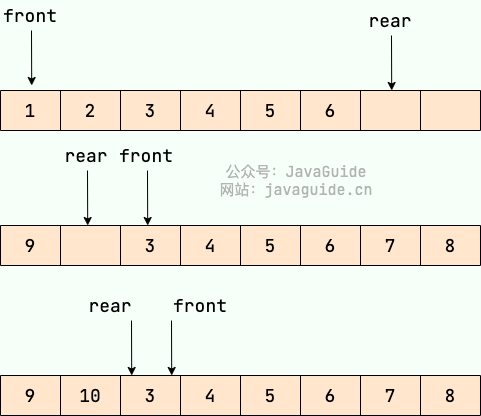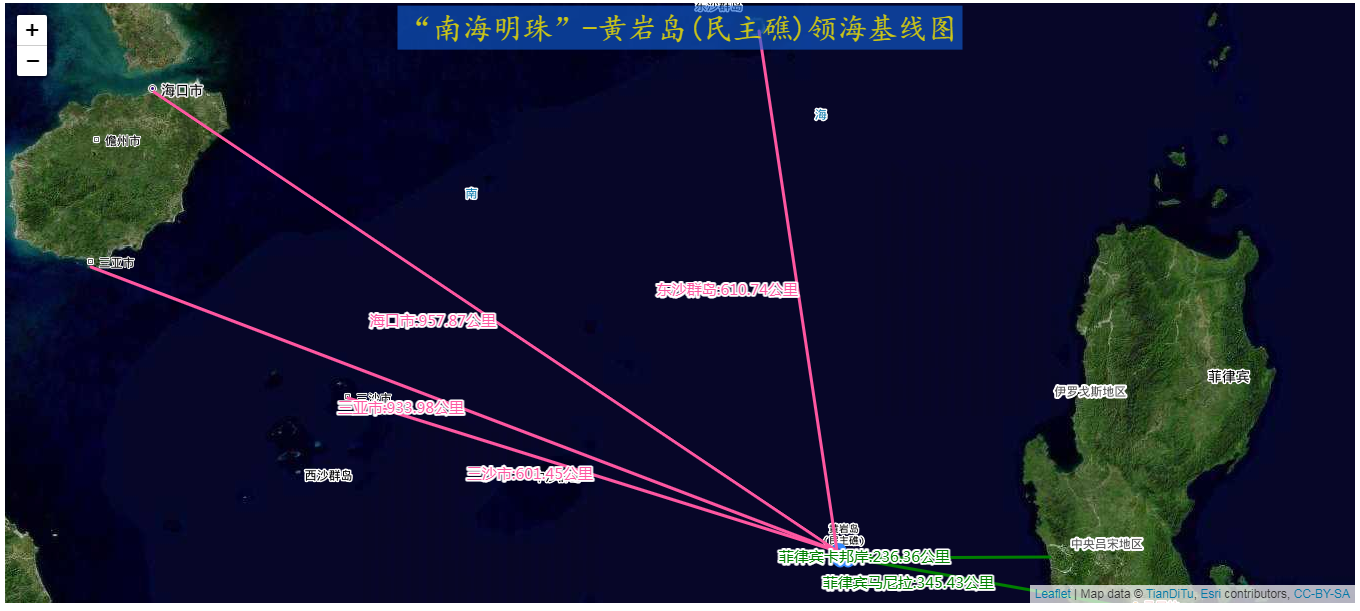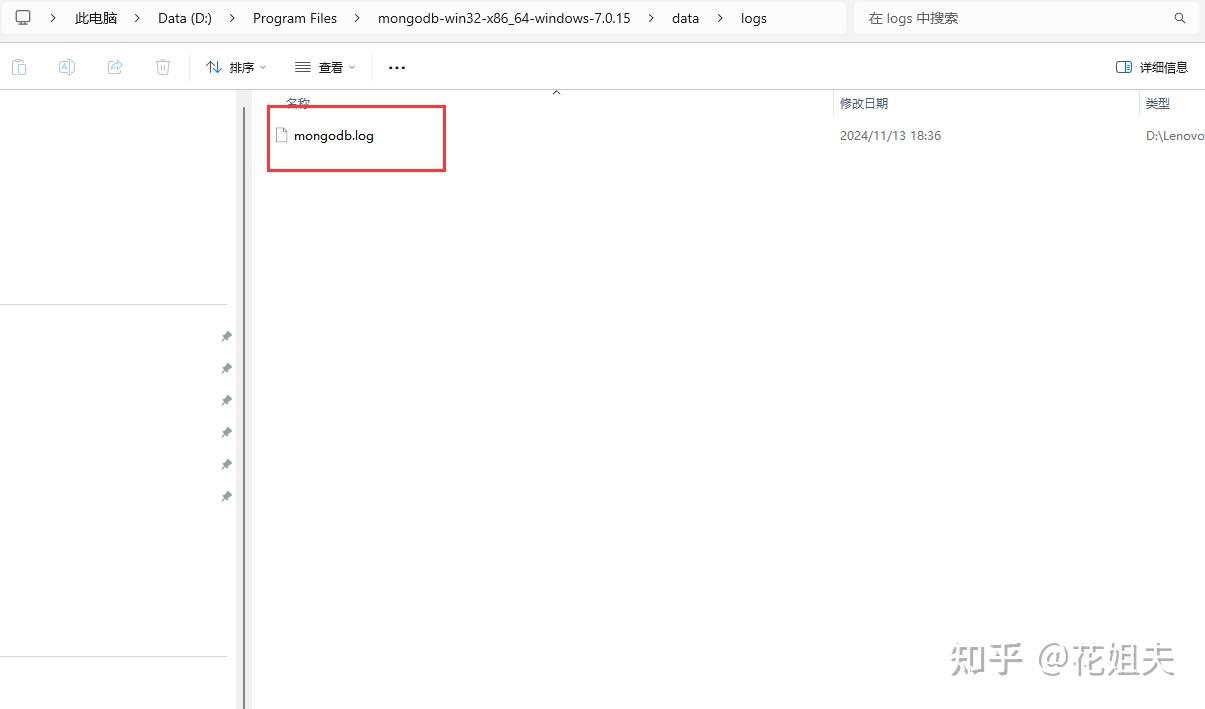文章目录
- 一、什么是栈?
- 1.1 栈的模拟实现
- 1.2 关于栈的例题
- 二、什么是队列?
- 2.2 队列的模拟实现
- 2.2 关于队列的例题
- 总结
提示:关于栈和队列的实现其实很简单,基本上是对之前的顺序表和链表的一种应用,代码部分也不难。主要的是对栈和队列的实际运用。
一、什么是栈?
可以理解为一个竖过来的数组、顺序表,同时这个数组只能将末尾的元素先推出来,再推出来前面的元素,也就是我们所说的,先进后出、后进先出。

栈的实例化
Stack<E> stack = new Stack<>();
1.1 栈的模拟实现

自定义的接口,规范自定义的类,便于模拟实现
public interface IStack {
//放入元素
int push(int a);
//推出栈顶元素
int pop();
//查看栈顶元素
int peek();
//栈是否为空
boolean isEmpty(int[] array);
//栈中的元素个数
int size();
//栈中寻找某个元素距离栈顶的距离
int search(int a);
}
push(int a) — 将元素放入栈中
public int push(int a) {
isFull(array);
array[useSide++] = a;
return a;
}

peek() — 查看栈顶元素
public int peek() {
try {
if(isEmpty(array)){
throw new EmptyException("空数组读取异常");
}
}catch (EmptyException e){
e.printStackTrace();
}
return array[useSide - 1];
}

pop() — 出栈顶元素
public int pop() {
int top = peek();
useSide--;
return top;
}

isEmpty(int[] array) — 判断栈是否为空
public boolean isEmpty(int[] array) {
return array.length == useSide;
}
size() — 得到栈中的元素个数
public int size() {
return useSide;
}
search(int a) — 得到栈中某个元素距离栈顶的距离,栈顶元素位置按1来计算
public int search(int a) {
int cur = useSide - 1;
int len = 1;
while (0 <= cur){
if(a == array[cur]){
return len;
}else {
cur--;
len++;
}
}
return -1;
}
代码整合
public class MyStack implements IStack{
private int[] array;
public MyStack() {
this.array = new int[10];
}
private int useSide;
private void isFull(int[] check){
if(isEmpty(check)){
array = Arrays.copyOf(check,2*check.length);
}
}
@Override
public int push(int a) {
isFull(array);
array[useSide++] = a;
return a;
}
@Override
public int pop() {
int top = peek();
useSide--;
return top;
}
@Override
public int peek() {
try {
if(isEmpty(array)){
throw new EmptyException("空数组读取异常");
}
}catch (EmptyException e){
e.printStackTrace();
}
return array[useSide - 1];
}
@Override
public boolean isEmpty(int[] array) {
return array.length == useSide;
}
@Override
public int size() {
return useSide;
}
@Override
public int search(int a) {
int cur = useSide - 1;
int len = 1;
while (0 <= cur){
if(a == array[cur]){
return len;
}else {
cur--;
len++;
}
}
return -1;
}
}
1.2 关于栈的例题
例题1 有效括号


class Solution {
public boolean isValid(String s) {
Stack<Character> stack = new Stack<>();
if(s == null){
return false;
}
for(int i = 0; i < s.length(); i++){
char cur = s.charAt(i);
if(cur == '(' || cur == '{' || cur == '['){
stack.push(cur);
}else if(cur == ')' || cur == '}' || cur == ']'){
if(stack.isEmpty()){
return false;
}
if(cur == ')'&&stack.peek() == '(' ||
cur == '}'&&stack.peek() == '{' ||
cur == ']'&&stack.peek() == '['){
stack.pop();
}else{
return false;
}
}else{
return false;
}
}
if(stack.isEmpty()){
return true;
}
return false;
}
}
例题2 逆波兰表达式

public int evalRPN(String[] tokens) {
Stack<String> stack = new Stack<>();
for(int i = 0; i < tokens.length; i++){
if(tokens[i].equals("+") || tokens[i].equals("-") || tokens[i].equals("*") || tokens[i].equals("/")){
int m = Integer.parseInt(stack.pop());
int n = Integer.parseInt(stack.pop());
if(tokens[i].equals("+")){
stack.push(String.valueOf(m+n));
}else if(tokens[i].equals("-")){
stack.push(String.valueOf(n-m));
}else if(tokens[i].equals("*")){
stack.push(String.valueOf(m*n));
}else{
stack.push(String.valueOf(n/m));
}
}else{
stack.push(tokens[i]);
}
}
return Integer.parseInt(stack.pop());
}
例题3 最小栈

public Stack<Integer> stack;
public Stack<Integer> minStack;
public MinStack() {
stack = new Stack<>();
minStack = new Stack<>();
}
public void push(int val) {
stack.push(val);
if(minStack.empty()){
minStack.push(val);
}else{
int m = minStack.peek();
if(m >= val){
minStack.push(val);
}
}
}
public void pop() {
if(stack.empty()){
return;
}
int m = stack.pop();
if(m == minStack.peek()){
minStack.pop();
}
}
public int top() {
if(stack.empty()){
return -1;
}
return stack.peek();
}
public int getMin() {
if(minStack.empty()){
return -1;
}
return minStack.peek();
}
例题4 栈的压入、弹出序列

public boolean IsPopOrder (int[] pushV, int[] popV) {
// write code here
Stack<Integer> stack = new Stack<>();
int j = 0;
for(int i = 0; i < pushV.length;i++){
stack.push(pushV[i]);
while(!stack.isEmpty() && stack.peek() == popV[j] && j < popV.length){
stack.pop();
j++;
}
}
return stack.isEmpty();
}
二、什么是队列?
可以理解为一个双向链表(一个一个节点在排队),同时这个链表只能将队头的元素先推出来,再推出来后面的元素,也就是我们所说的,先进先出、后进后出。

队列的实例化
Deque<E> stack = new ArrayDeque<>();//双端队列的线性实现
Deque<E> queue = new LinkedList<>();//双端队列的链式实现
2.2 队列的模拟实现

自定义的接口,规范自定义的类,便于模拟实现
public interface IQueue {
//
int offer(int a);
int poll();
int peek();
boolean isEmpty();
}
isEmpty() — 判断是否为空队列
@Override
public boolean isEmpty() {
return useSide == 0;
}
offer(int a) — 从队尾放入元素
public int offer(int a) {
ListNode listNode = new ListNode(a);
listNode.val = a;
if(isEmpty()){
head = listNode;
last = listNode;
}else {
last.next = listNode;
listNode.pre = last;
last = listNode;
}
useSide++;
return a;
}

peek() — 查看队头元素
public int peek() {
try {
if(head == null){
throw new EmptyException("空指针异常访问");
}
}catch (EmptyException e){
e.printStackTrace();
}
return head.val;
}

poll() — 推出队头的元素
public int poll() {
int fisrt = peek();
head = head.next;
useSide --;
return fisrt;
}

代码整合
public class MyQueue implements IQueue{
static class ListNode{
int val;
ListNode pre;
ListNode next;
public ListNode(int val) {
this.val = val;
}
}
private ListNode head;
private ListNode last;
private int useSide;
@Override
public int offer(int a) {
ListNode listNode = new ListNode(a);
listNode.val = a;
if(isEmpty()){
head = listNode;
last = listNode;
}else {
last.next = listNode;
listNode.pre = last;
last = listNode;
}
useSide++;
return a;
}
@Override
public int poll() {
int fisrt = peek();
head = head.next;
useSide --;
return fisrt;
}
@Override
public int peek() {
try {
if(head == null){
throw new EmptyException("空指针异常访问");
}
}catch (EmptyException e){
e.printStackTrace();
}
return head.val;
}
@Override
public boolean isEmpty() {
return useSide == 0;
}
}
2.2 关于队列的例题
例题1 设计循环队列

class MyCircularQueue {
public int[] array;
int front;
int rear;
public MyCircularQueue(int k) {
array = new int[k+1];
}
// 向循环队列插入一个元素。如果成功插入则返回真。
public boolean enQueue(int value) {
if(isFull()){
return false;
}
array[rear] = value;
rear = (rear+1) % array.length;
return true;
}
//从循环队列中删除一个元素。如果成功删除则返回真。
public boolean deQueue() {
if(isEmpty()){
return false;
}
front = (front+1) % array.length;
return true;
}
//从队首获取元素。如果队列为空,返回 -1 。
public int Front() {
if(isEmpty()){
return -1;
}
return array[front];
}
//获取队尾元素。如果队列为空,返回 -1 。
public int Rear() {
if(isEmpty()){
return -1;
}
if(rear == 0){
return array[array.length - 1];
}
return array[rear-1];
}
//检查循环队列是否为空。
public boolean isEmpty() {
return rear == front;
}
//检查循环队列是否已满。
public boolean isFull() {
return (rear+1) % array.length == front;
}
}
例题2 用队列实现栈

class MyStack {
public Queue<Integer> queue1;
public Queue<Integer> queue2;
int size;
public MyStack() {
queue1 = new LinkedList<>();
queue2 = new LinkedList<>();
}
public void push(int x) {
if(queue1.isEmpty() && queue2.isEmpty()){
queue1.offer(x);
size++;
}else if(!queue1.isEmpty()){
queue1.offer(x);
size++;
}else if(!queue2.isEmpty()){
queue2.offer(x);
size++;
}
}
public int pop() {
if(queue1.isEmpty() && queue2.isEmpty()){
return -1;
}
if(queue1.isEmpty() && !queue2.isEmpty()){
int cur = size - 1;
while(cur != 0){
queue1.offer(queue2.poll());
cur--;
}
size--;
return queue2.poll();
}else if(!queue1.isEmpty() && queue2.isEmpty()){
int cur = size - 1;
while(cur != 0){
queue2.offer(queue1.poll());
cur--;
}
size--;
return queue1.poll();
}
return -1;
}
public int top() {
if(queue1.isEmpty() && queue2.isEmpty()){
return -1;
}
if(queue1.isEmpty() && !queue2.isEmpty()){
int cur = size - 1;
while(cur != 0){
queue1.offer(queue2.poll());
cur--;
}
int m = queue2.peek();
queue1.offer(queue2.poll());
return m;
}else if(!queue1.isEmpty() && queue2.isEmpty()){
int cur = size - 1;
while(cur != 0){
queue2.offer(queue1.poll());
cur--;
}
int m = queue1.peek();
queue2.offer(queue1.poll());
return m;
}
return -1;
}
public boolean empty() {
return size == 0;
}
}
例题3 用栈实现队列

Stack<Integer> stack1;
Stack<Integer> stack2;
int size = 0;
public MyQueue() {
stack1 = new Stack<>();
stack2 = new Stack<>();
}
//将元素 x 推到队列的末尾
public void push(int x) {
stack1.push(x);
size++;
}
//从队列的开头移除并返回元素
public int pop() {
if(empty()){
return -1;
}
if(!stack2.isEmpty()){
size--;
return stack2.pop();
}else if(stack2.isEmpty() && !stack1.isEmpty()){
while(!stack1.isEmpty()){
stack2.push(stack1.pop());
}
size--;
return stack2.pop();
}
return -1;
}
//返回队列开头的元素
public int peek() {
if(empty()){
return -1;
}
if(!stack2.isEmpty()){
return stack2.peek();
}else if(stack2.isEmpty() && !stack1.isEmpty()){
while(!stack1.isEmpty()){
stack2.push(stack1.pop());
}
return stack2.peek();
}
return -1;
}
//如果队列为空,返回 true ;否则,返回 false
public boolean empty() {
return size == 0;
}
总结
本篇文章介绍了有关数据结构中的栈和队列的相关内容,以及它们的简单实现,和简单使用,如果有什么不正确的或者不严谨的地方,还望指正,谢谢大家!



















